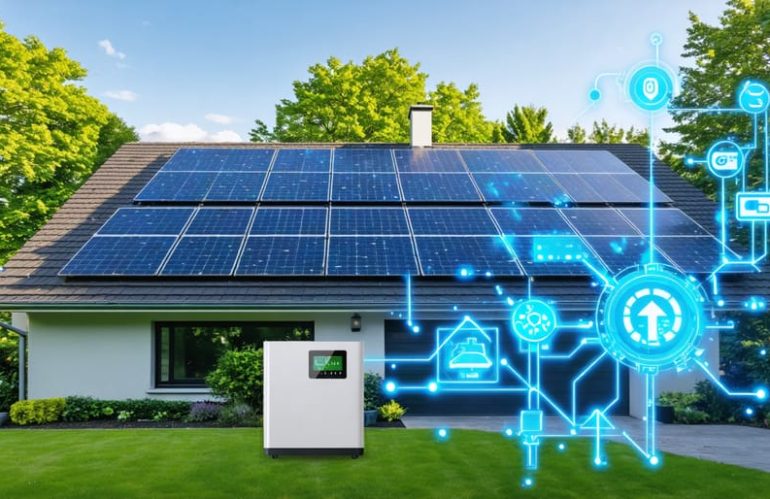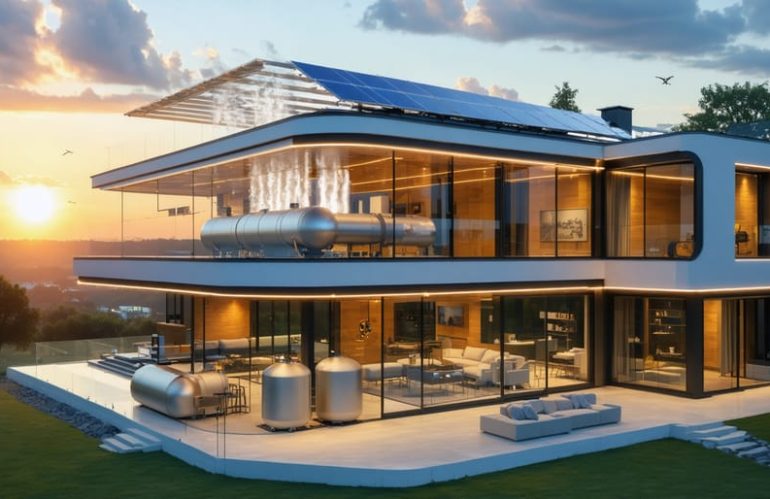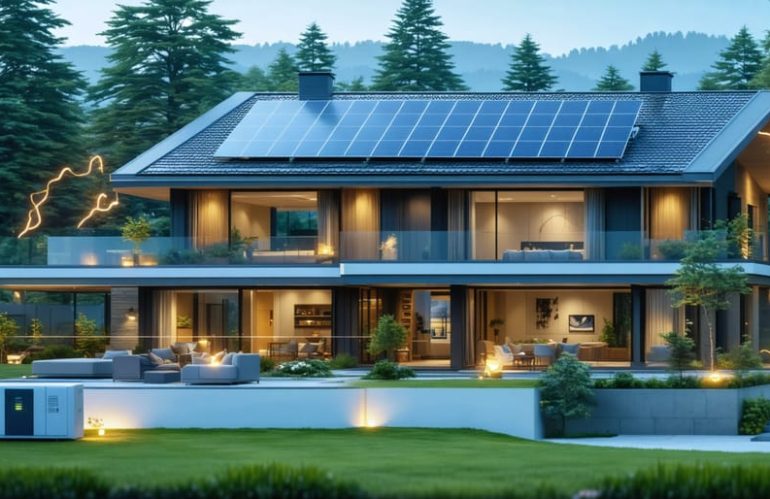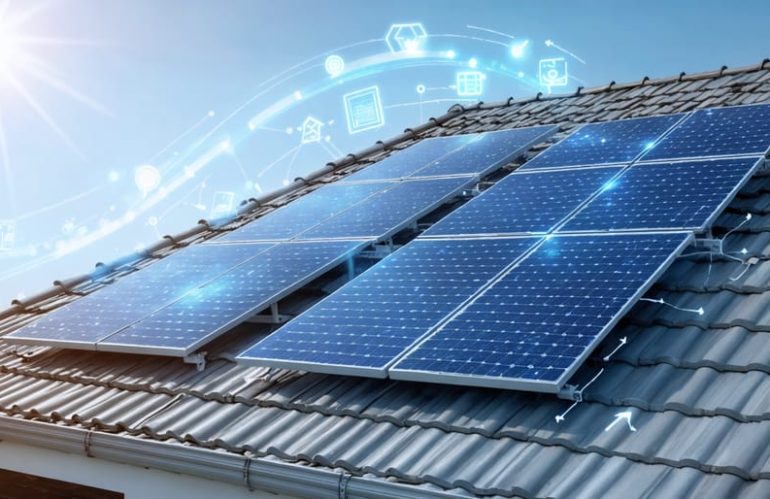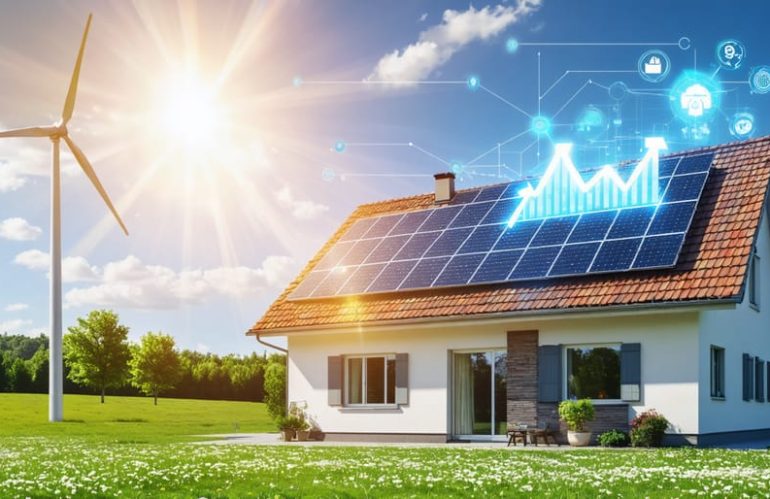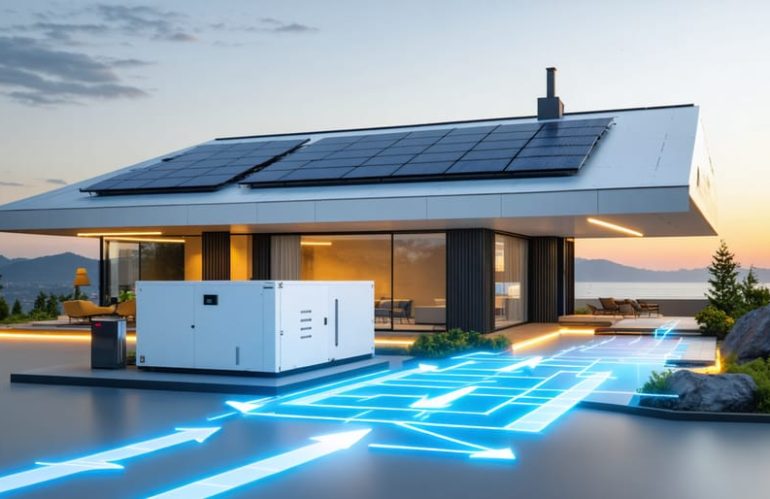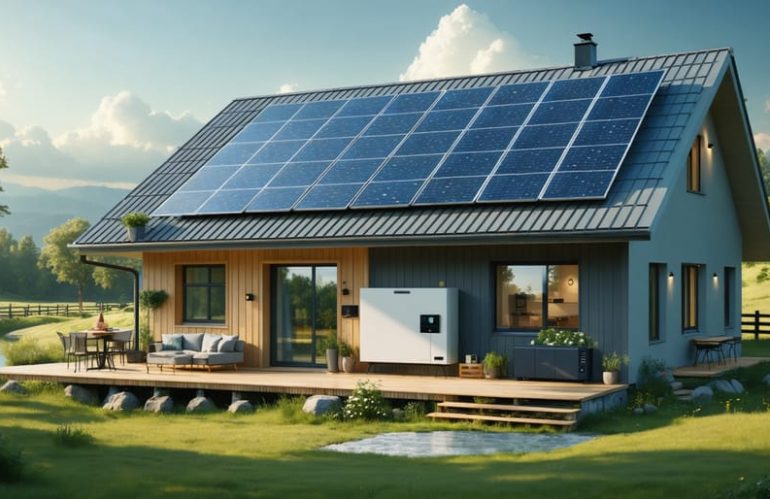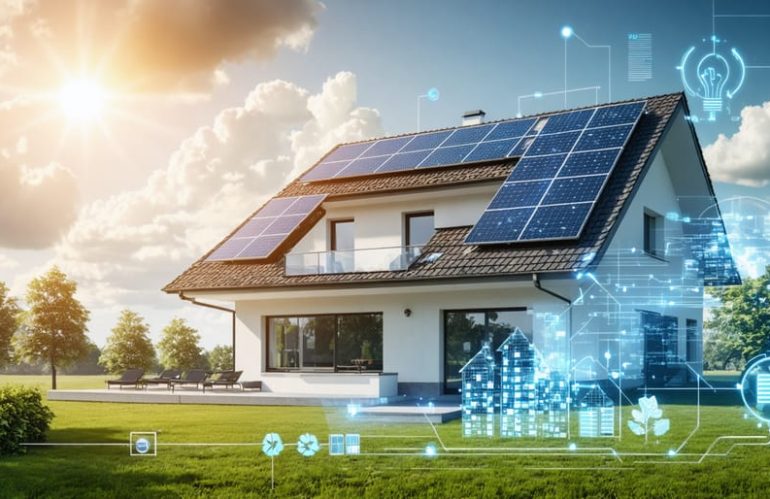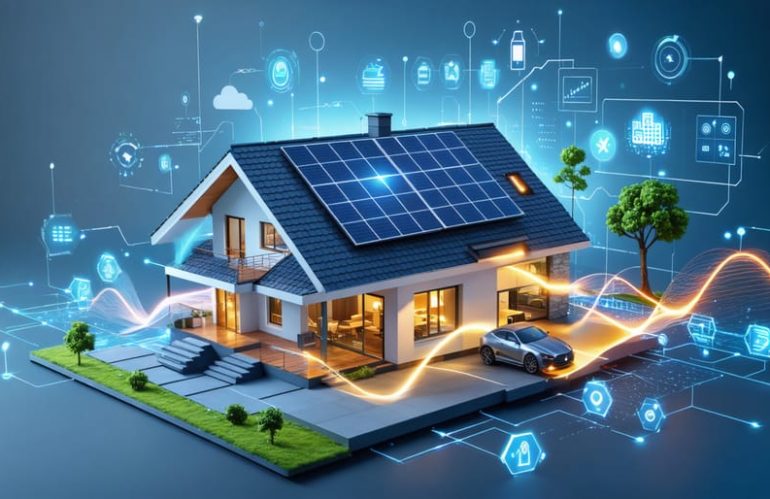Achieving complete energy independence through solar power isn’t just an environmental choice—it’s a powerful financial decision that transforms your home into a self-sustaining powerhouse. Modern solar technology, coupled with advanced battery storage systems, now makes it possible for homeowners to generate, store, and manage their own electricity year-round. This shift away from traditional utility dependence offers more than just lower monthly bills; it provides …
Category: Energy Independence Solutions
Strategies and implementations for achieving energy self-sufficiency
Hydrogen Fuel Cells: The Clean Energy Solution That Could Power Your Home
Imagine powering your entire home with the same element that fuels our sun – hydrogen. Hydrogen fuel cells represent a groundbreaking shift in residential energy technology, offering a clean, efficient way to generate electricity while producing only water as a byproduct. Unlike traditional solar panels that depend on daylight, these remarkable devices can produce power 24/7, transforming the way we think about home energy independence.
As global leaders race to combat climate change, hydrogen fuel cells have emerged as a promising solution for sustainable living. These electrochemical powerhouses combine hydrogen and oxygen …
How U.S. Battery Storage Is Revolutionizing Home Energy Independence
America’s home battery storage capacity has surged to record levels, revolutionizing how households manage their energy needs. With utility-scale battery installations exceeding 10 gigawatts nationwide – enough to power 1.5 million homes – homeowners now have unprecedented opportunities to achieve energy independence. This dramatic expansion reflects a broader shift toward sustainable energy solutions, driven by falling technology costs and increasing grid reliability concerns. For…
Parallel Solar Panel Wiring: Power Up Your Home’s Energy Production
Connecting four solar panels in parallel can dramatically boost your home’s power generation while maintaining a consistent voltage output – a smart choice for homeowners seeking reliable renewable energy. This configuration allows your system to maintain steady voltage even when some panels are partially shaded, making it ideal for residential rooftops with varying sun exposure throughout the day. When properly installed, a parallel array of four panels increases current output fourfold, delivering the robust power needed for demanding household applications while offering built-in redundancy if one panel underperforms. …
Solar Power Freedom: How Home Solar Puts You in Control of Your Energy
Solar energy isn’t just a trend – it’s revolutionizing how homeowners power their lives while making a lasting impact on both their wallets and the environment. As energy costs continue to rise and climate concerns take center stage, solar power emerges as a practical, powerful solution that delivers multiple benefits for today’s homeowners.
From slashing monthly utility bills to increasing property values, solar installations offer compelling advantages that extend far beyond environmental impact. Whether you’re looking to reduce your carbon footprint, gain energy independence, or make a smart long-…
Solar Freedom: How Home Solar Installation Puts Power Back in Your Hands
Transform your home into a sustainable powerhouse through residential solar installation – a proven investment that’s revolutionizing how American homeowners generate and consume energy. With utility costs rising by an average of 4% annually, solar panels offer an immediate path to energy independence while increasing property values by up to 4.1%.
Today’s solar technology delivers more efficiency than ever before, converting sunlight into reliable electricity that powers homes across all seasons. Modern installations seamlessly integrate with existing architecture, utilizing smart monitoring systems that let …
Power Your Home’s Energy Freedom with Lithium Battery Storage
Transform your home into a reliable power fortress with lithium battery energy storage – the cornerstone of any successful energy independence journey. These advanced systems capture excess solar power during peak production hours and deliver it when you need it most, slashing utility bills while ensuring uninterrupted power supply during outages.
Unlike traditional lead-acid batteries, modern lithium storage solutions offer up to three times longer lifespan, require …
Power Your Home Off-Grid: Building a Self-Sufficient Solar System That Actually Works
Imagine powering your entire home without ever seeing another electricity bill. Self-sufficient solar power systems are revolutionizing home energy independence, offering a sustainable solution that pays for itself over time. Beyond mere cost savings, these systems provide reliable power during grid outages and contribute to a cleaner environment.
Today’s solar technology has evolved far beyond its humble beginnings, with modern systems capable of generating, storing, and managing enough power to meet a typical household’s complete energy needs. Whether you’re looking to go completely off-grid or simply reduce your…
Solar Microgrids: Power Your Home Even When The Grid Goes Down
Transform your home into an energy-independent powerhouse with a solar microgrid system – the ultimate solution for sustainable living and energy security. Unlike traditional solar setups, microgrids create a self-contained power ecosystem that combines solar panels, smart storage solutions, and advanced control systems to deliver reliable electricity even when the main grid fails.
Imagine never worrying about power outages again while dramatically reducing your monthly energy bills. Solar microgrids achieve this by intelligently managing power generation, storage, and distribution within your property. They automatically …
Battery Energy Storage Systems: Your Path to True Energy Independence
Battery energy storage systems (BESS) represent the future of home energy management, transforming how we store and use power from solar panels and the grid. By understanding the core components and connections within a BESS diagram, homeowners can make informed decisions about their energy independence journey. These systems integrate seamlessly with existing electrical infrastructure, storing excess solar power during sunny days and providing reliable backup during outages or peak demand periods.
A well-designed battery storage system acts as the bridge between your power generation sources and daily energy needs. Modern BESS …

